Reading my very favourite comics is like eating a favourite sandwich. It doesn’t matter how often you have it; each time is as good as the last, and you savour every single bite. That’s certainly the case for me with Thor: God of Thunder (2013).
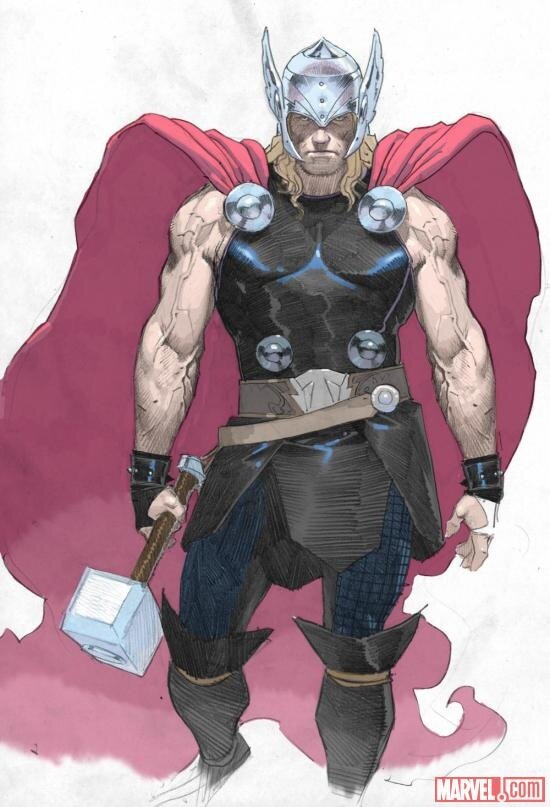
Initially published as part of the Marvel Now initiative, Thor: God of Thunder was released monthly along with a number of other diverse and distinctive relaunches. Originality and accessibility seemed to be a common goal across the Marvel line at the time, which included fresh new takes such as Brian Bendis’ X-Men, Jonathan Hickman’s Avengers and Gerry Duggan’s Deadpool. And yet within this crowded and competitive marketplace, writer Jason Aaron’s hard fantasy reboot of Thor was amongst the best titles in the impressive roster of Marvel output.
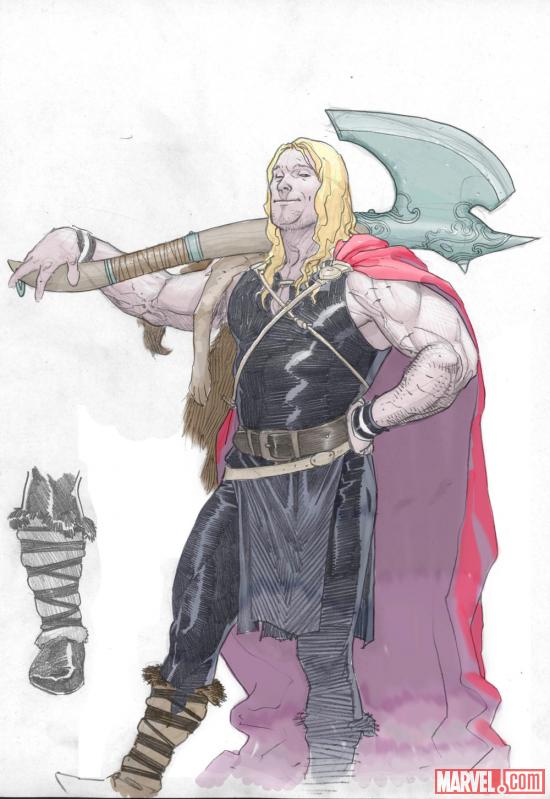
Opening with an entirely self-contained storyline, told by a (mostly) single creative team, the first 11 issues of the comic are effectively a serialised graphic novel split in two halves; The God Butcher and God Bomb. The plot hook is compelling; a serial killer of gods is running amok across the galaxy, presenting a threat so profound that Thor must confront him across three separate eras of his millenia-spanning lifetime. The three plot-threads unfold in parallel, following a young brash Thor in the era of Vikings, contemporary Thor in his heroic incarnation, and aged King Thor in the far future as he reaches the end of his reign alone amongst the ruins of Asgard. When these three plots collide, the comic spectacularly spins off in some truly unexpected directions.
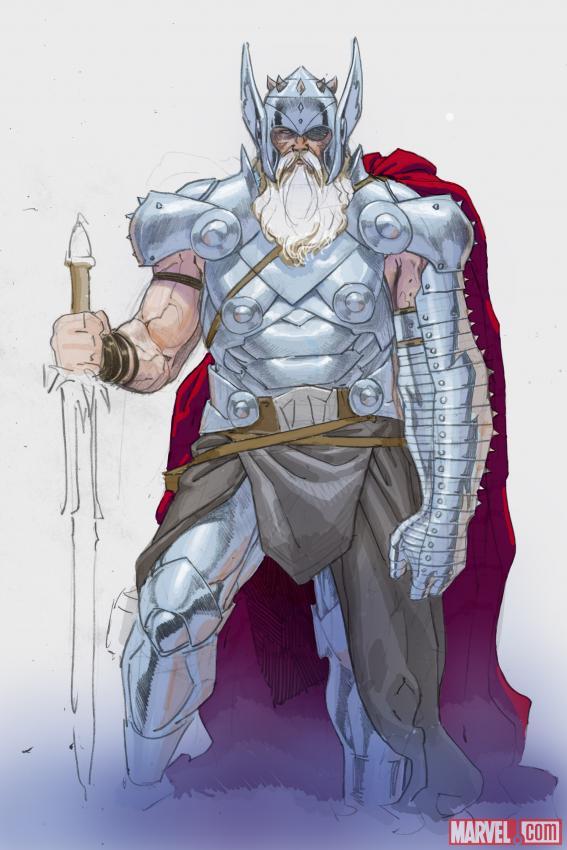
Gor is a fantastic villain; effectively a super-powered atheist on a homicidal mission to set the universe to rights by wiping out all gods. Although he’s quite clearly presented as being cruel and unhinged; it’s also not hard to sympathise with the objective righteousness of his cause. In contrast to this foe, Thor’s portrayal is cranked up to 11, leaning heavily into the cliches as a hard drinking, hard loving fighter of monsters (albeit at various stages of his life). The end results is a surprisingly rollicking high adventure, which simultaneously manages to be both tongue-in-cheek and witty, whilst also substantial, significant and poignant.
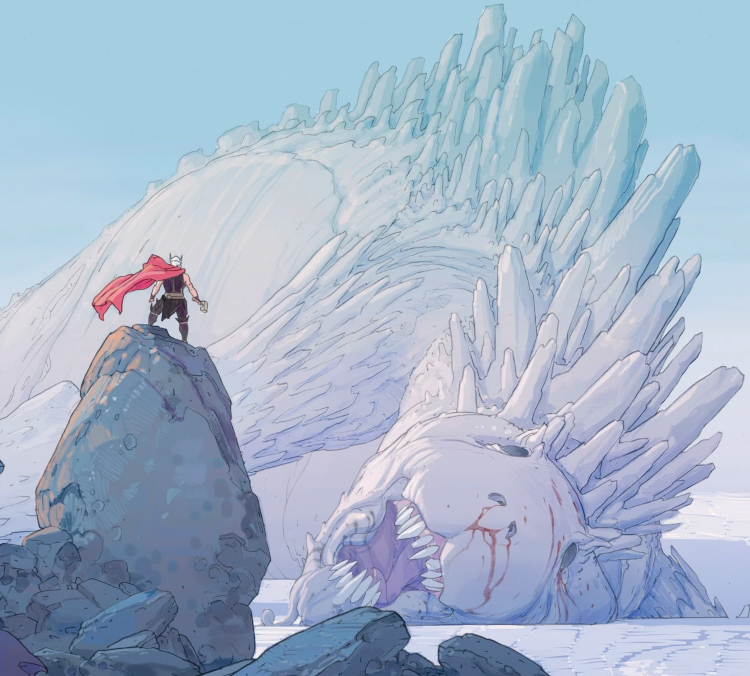
The artwork is stupendous throughout; Esad Ribic’s cinematic pencils and explosive action are complimented perfectly by Ive Svorcina’s paint-styled colours, giving each page the look of classic Sword and Sorcery role playing games or pulp novels. Some of the visuals were in fact so iconic that they were lifted directly for the blockbuster Thor: Love and Thunder movie, which also featured Gor as main antagonist, and Omnipotence City as a major setting. Although I feel that movie had mixed results; these source comics are a winner on every page. They transcend their obvious superhero and high fantasy roots, and reading them is a celebration of epic storytelling for the ages.

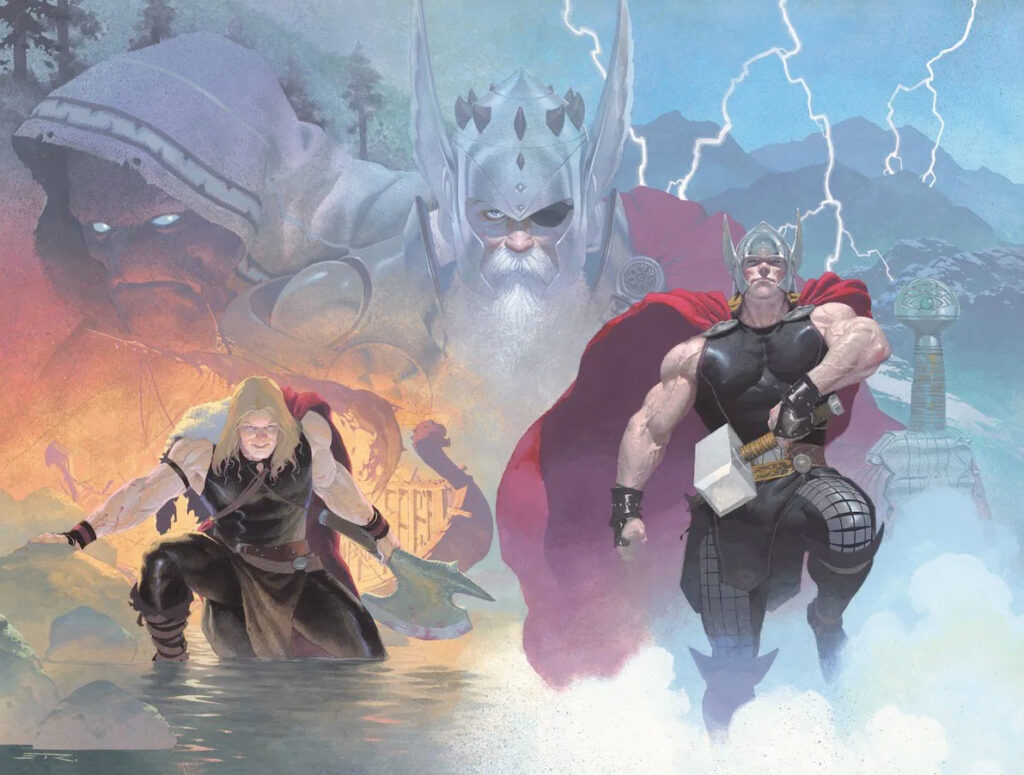
Pingback: The Mighty Thor: Goddess of Thunder – comix galore